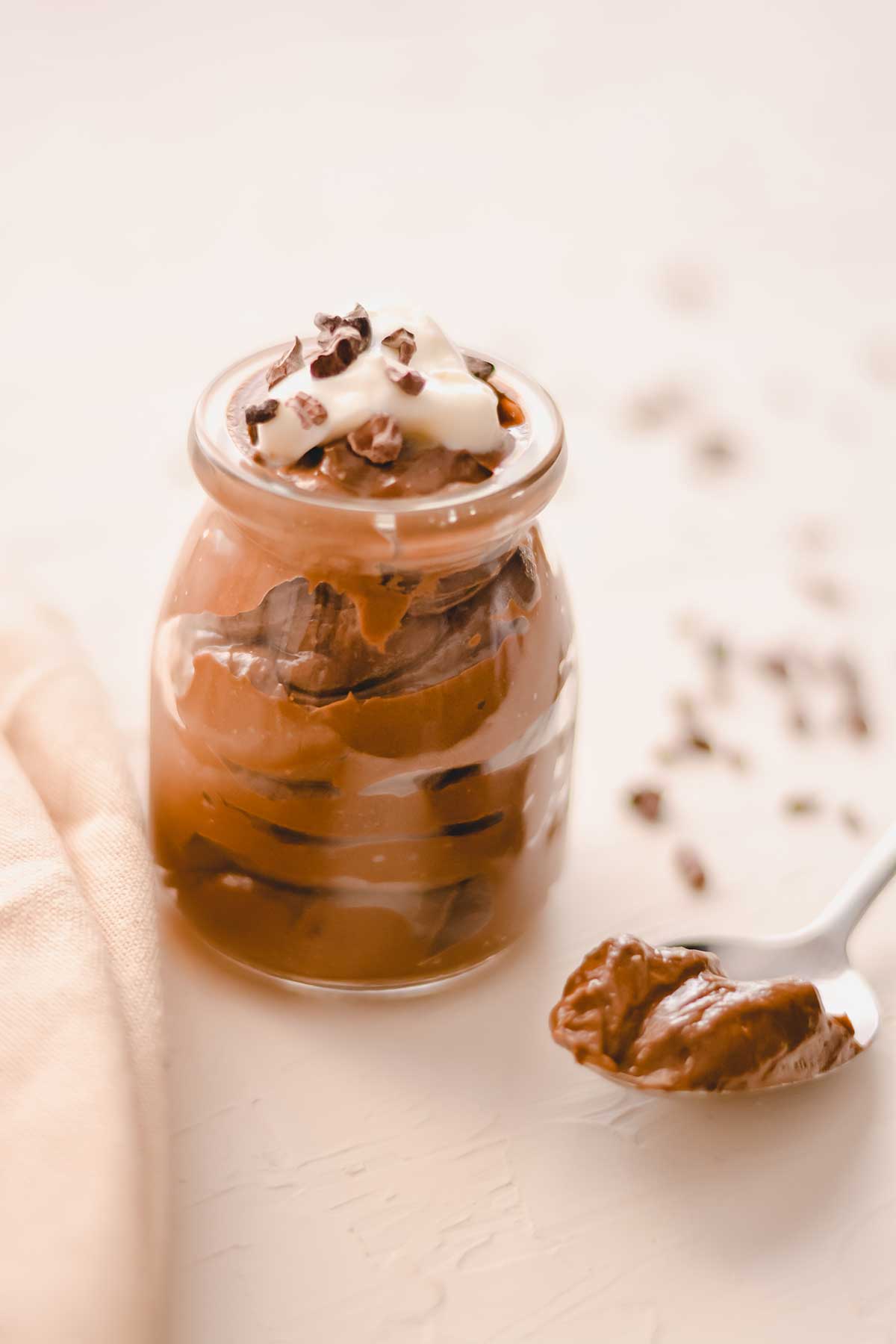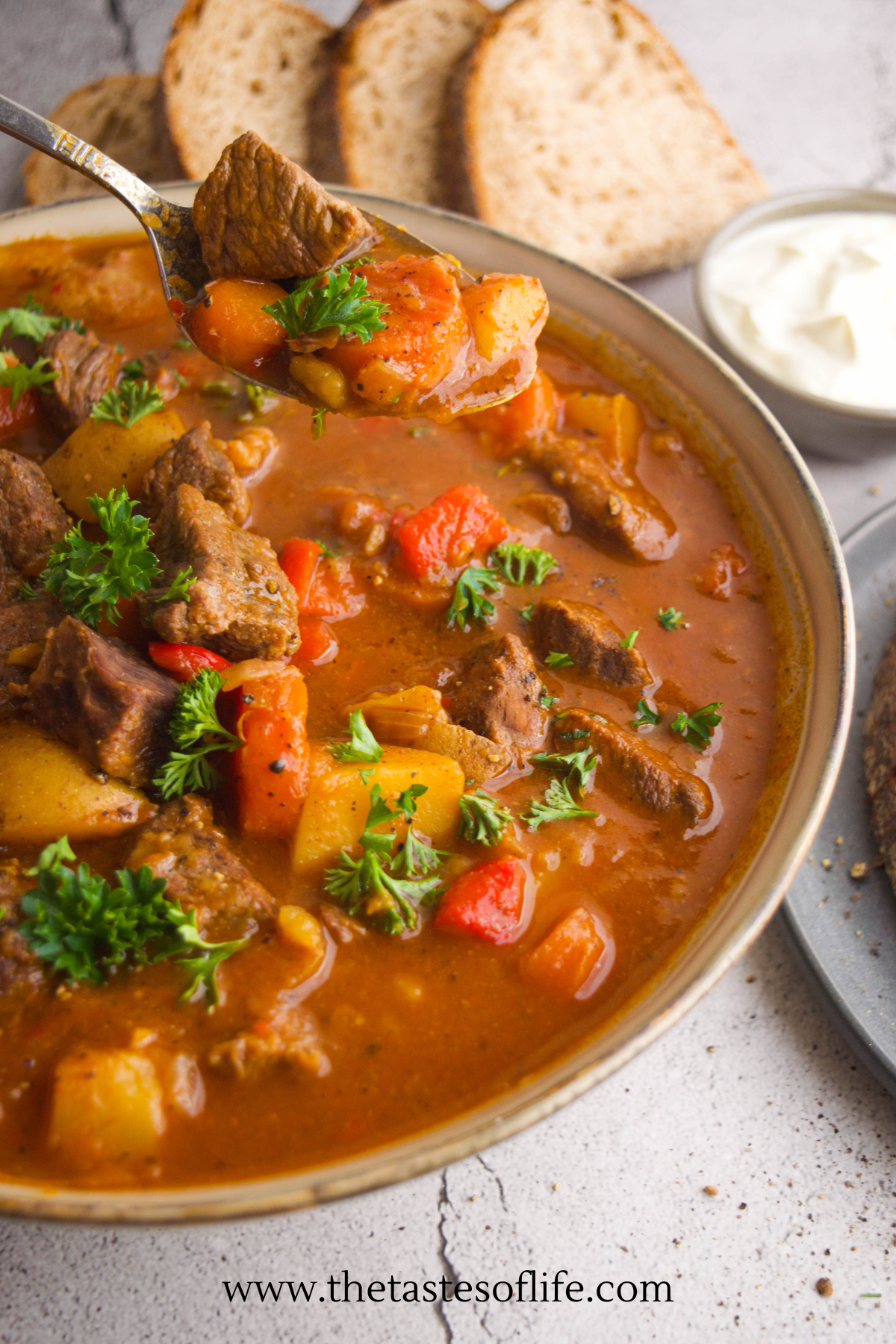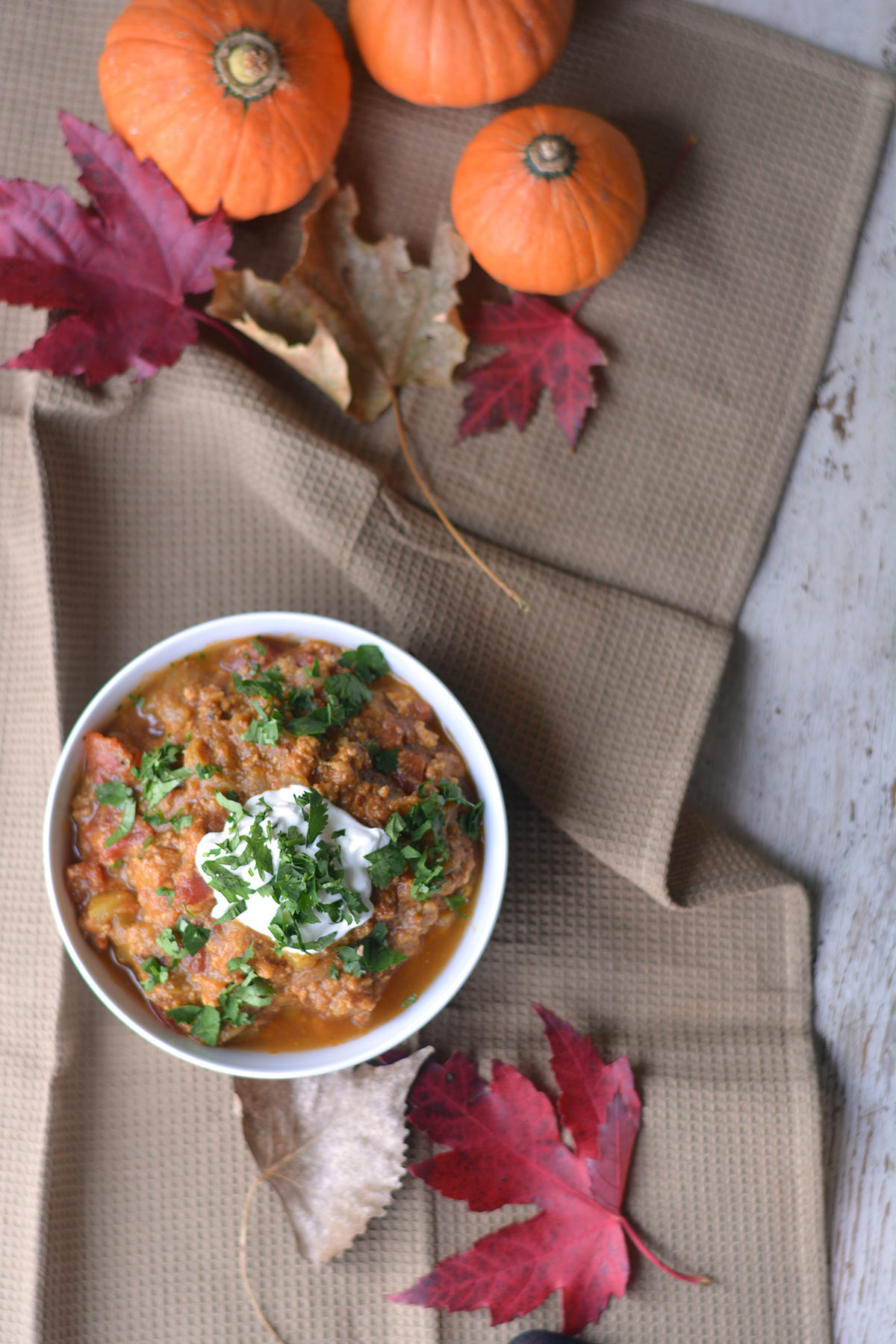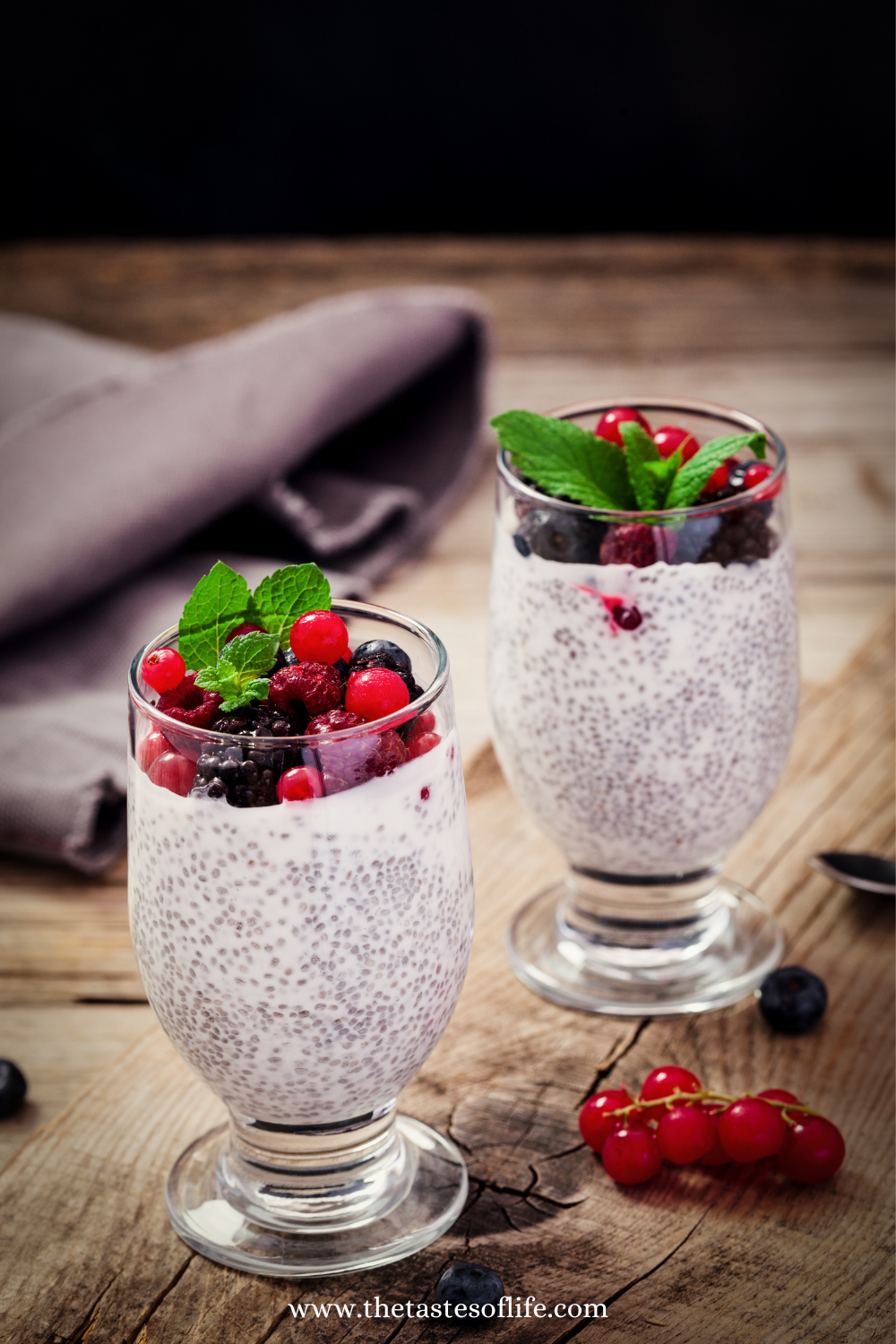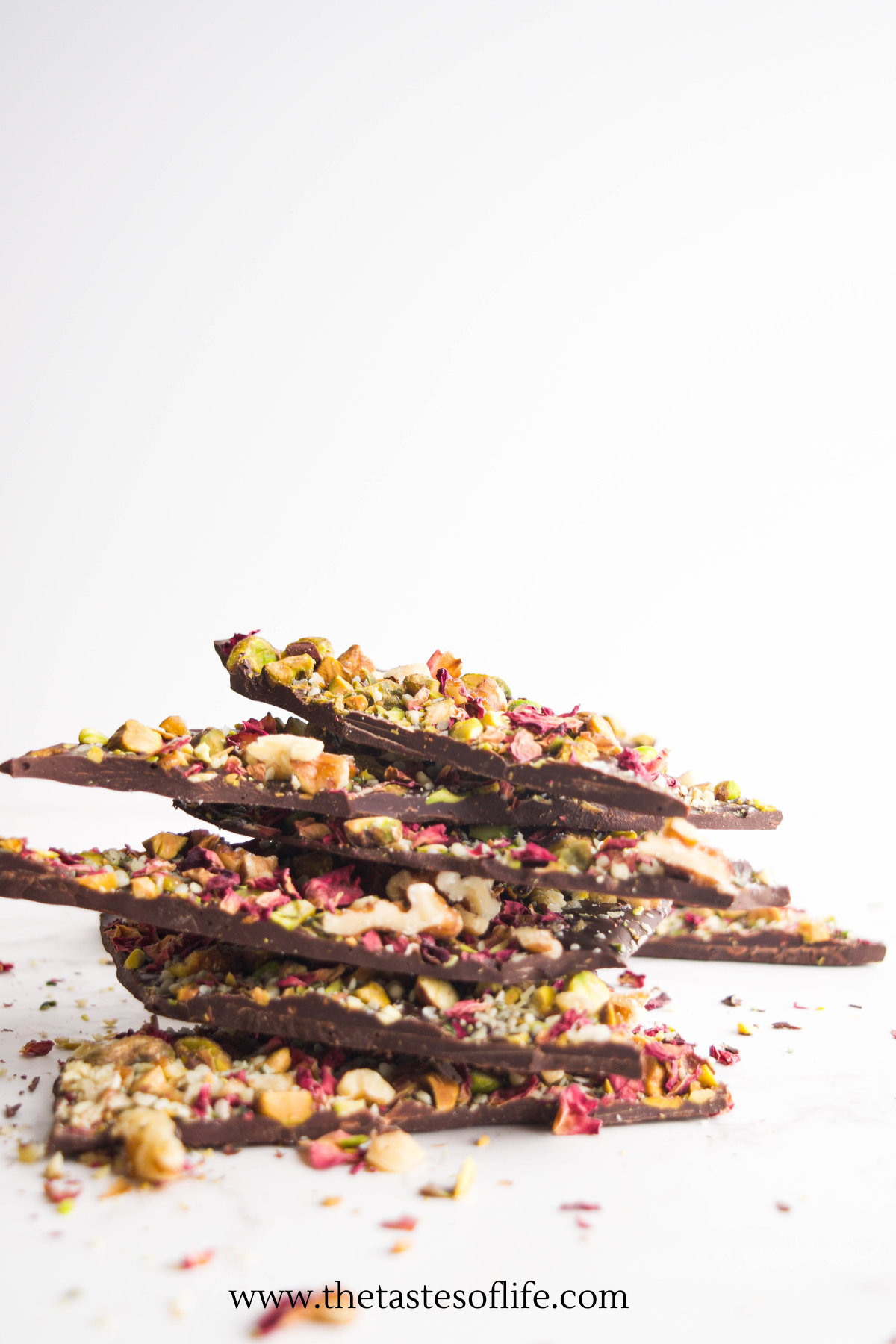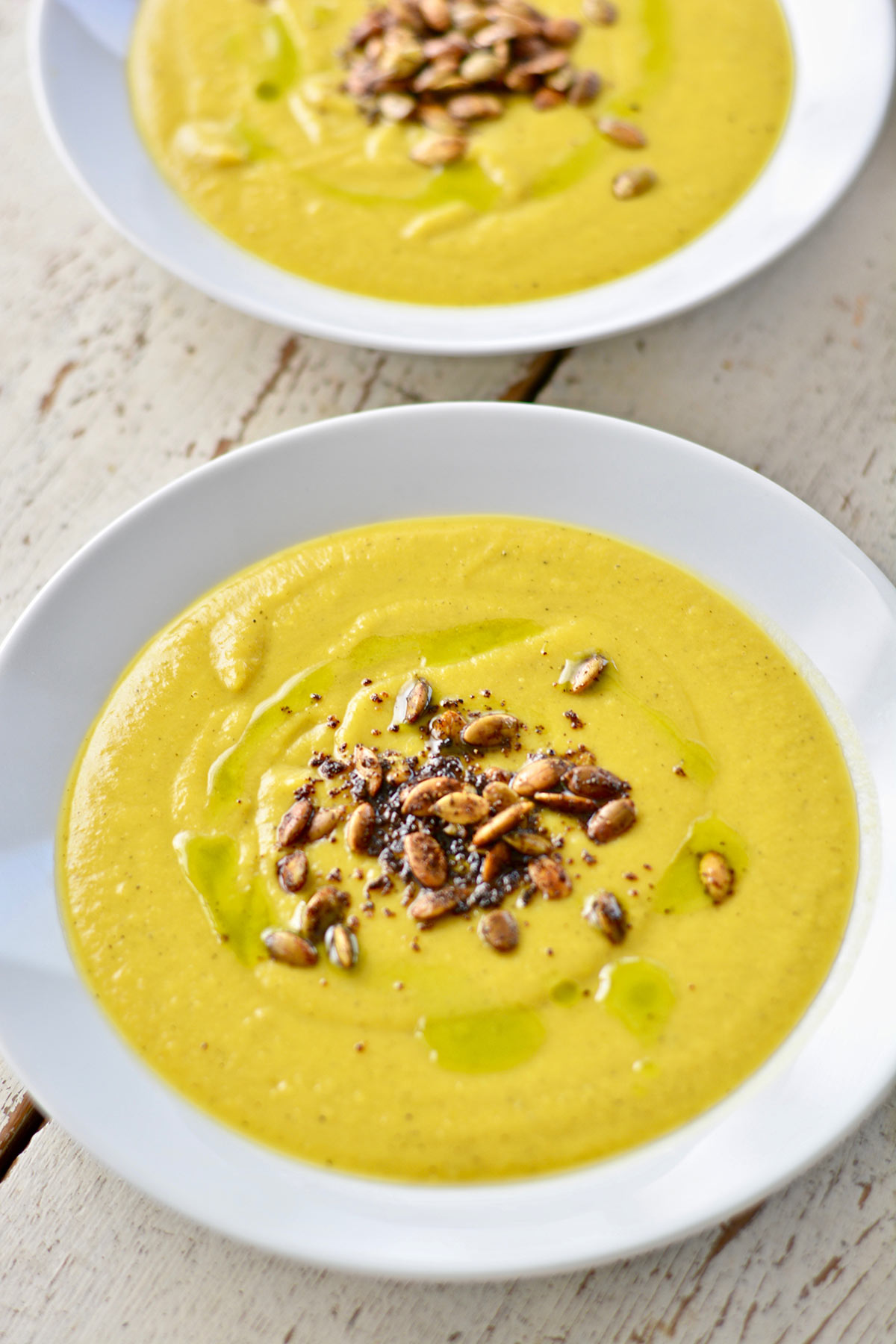The Tastes of Poland – Flavor of Poland Culinary Traditions
Sharing is carying❤️ Embark on a culinary journey through The Tastes of Poland with insights into traditional Polish dishes, contemporary cuisine, and dining experiences. Explore the vibrant flavors, innovative techniques, and rich heritage of Polish food culture.

The Tastes of Poland Exploring the Rich Flavors of Polish Cuisine
As a native of Poland, I am immensely proud of my country’s rich culinary heritage. Our cuisine reflects our history, culture, and the diverse ingredients available in our region. Join me on a delectable journey through the flavors and traditions of Polish cuisine. One of the most beautiful aspects of Poland is the food that food enthusiasts need to try!
Growing up in Poland, I was fortunate to experience the tantalizing aromas and flavors of traditional Polish dishes prepared by my family and enjoyed at local gatherings. Polish cuisine offers something for every palate, from hearty stews to delicate pastries. Polish people love to cook and they are proud of it!
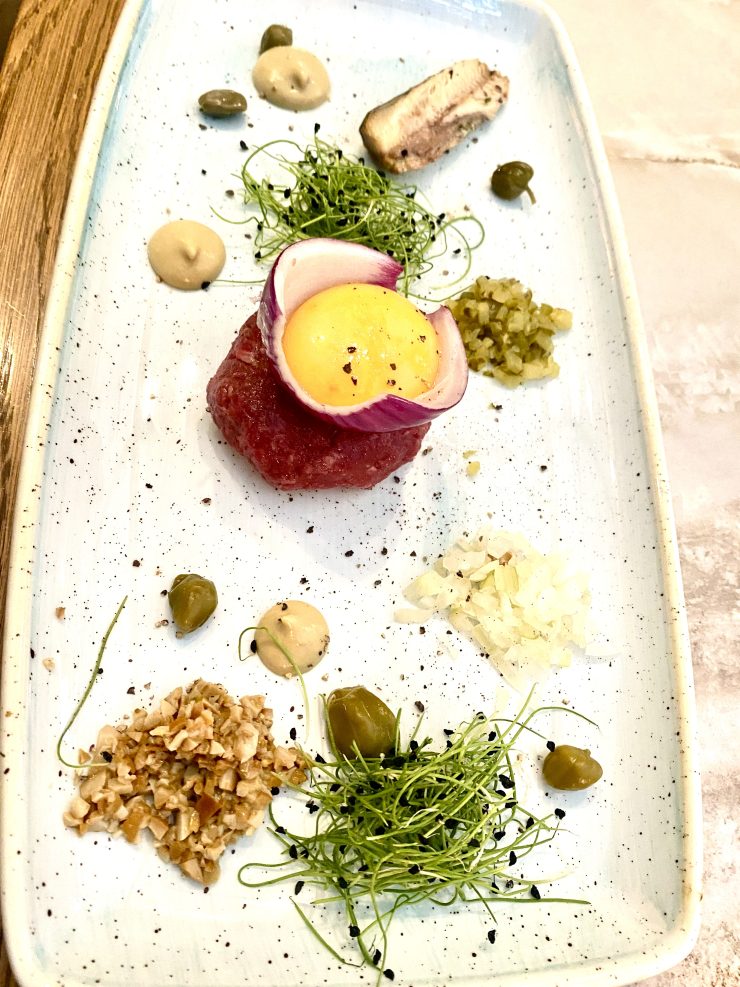
Flavor of Poland
Exploring the Taste of Poland starts with traditional Polish food that is rich in flavors, relies on fresh and locally sourced ingredients, and emphasizes traditional cooking methods passed down through generations. These methods often involve slow cooking, simmering, and braising to develop rich flavors and tender textures in dishes. Hunting and foraging have long been integral parts of Polish culinary traditions. Historically, hunting provided a significant portion of the meat consumed in Polish households, with game such as deer, wild boar, and game birds featuring prominently in traditional dishes. Foraging for wild mushrooms, berries, and herbs is also a cherished tradition in Poland, particularly in rural areas where the natural landscape offers an abundance of edible treasures. These wild ingredients are then incorporated into traditional foods such as mushroom soup, pierogi filling, stews, and sauces, adding unique flavors and textures to traditional Polish cuisine.
In addition to hunting and foraging, traditional methods of food preservation, such as smoking, pickling, and fermenting, are also commonly used in Polish cuisine. Saurekraut and pickles are for sure staples in Poland. Smoked meats and fish, pickled cucumbers and cabbage, and fermented dairy products like kefir and sour cream are all examples of foods that have been preserved using these traditional techniques, extending their shelf life and enhancing their flavor and nutritional value.
Traditional Dishesh In Poland
One of the cornerstones of Polish cuisine is pierogi. These small dumplings are a beloved staple in Polish households and are enjoyed in various flavors. Whether filled with savory ingredients like potatoes and cheese, sauerkraut and wild mushrooms, or sweet fillings like fruit or sweet cheese, pierogi are a true comfort food that brings people together.(Now you can also make a gluten-free version!)
Another iconic dish is bigos, often called a “hunter’s stew.” This hearty stew combines sauerkraut, various meats such as sausage, bacon, or game meats, as well as wild mushrooms and spices. The result is a rich and flavorful stew that warms the soul, perfect for cold winter days.
An exploration of Polish cuisine would only be complete with mentioning kielbasa. This traditional Polish sausage comes in many varieties, each with its own unique blend of spices and flavors. Whether grilled, smoked, or boiled, kielbasa is a versatile ingredient that adds depth and character to many Polish dishes. Another popular dish is kotlet schabowy, made from pork chop that is breaded and pan-fried.
One of my personal favorites is żurek, a sour rye soup that is a popular choice for special occasions and holidays. Made with fermented rye flour, żurek has a tangy flavor enhanced with smoked sausage, potatoes, and hard-boiled eggs. It’s a dish that is as comforting as it is delicious. I make a gluten-free version of it as well.
One dish that holds a special place in my heart is gołąbki, or stuffed cabbage rolls. Made by wrapping cooked cabbage leaves around a flavorful filling of ground meat, rice, and spices, gołąbki are simmered in a savory tomato sauce until tender. The result is a satisfying and comforting dish often enjoyed during family gatherings and holidays.
Another classic Polish dish is placki ziemniaczane, or potato pancakes. Made with grated potatoes, flour, and eggs, these crispy pancakes are fried until golden brown and served hot with sour cream or applesauce. Whether enjoyed as a snack or a side dish, placki ziemniaczane are a favorite among both young and old alike.
For seafood lovers, Polish cuisine offers a variety of delicious options, particularly along the Baltic Sea coast. One popular dish is śledź w śmietanie, or herring in sour cream. Marinated in a creamy sauce made with sour cream, onions, and spices, herring is a flavorful and satisfying appetizer that pairs perfectly with a slice of hearty rye bread. My greatest memories from going to the Baltic Sea for vacation with a family were going to a fish market and getting sprats and eels then smoking them with family and friends.

Of course, no Polish meal is complete without dessert. Polish cuisine offers many sweet treats to satisfy any sweet tooth. From delicate pastries like paczki, filled with jam or custard, to traditional cakes like scenic (cheesecake – different than the one in the US) or makowiec (poppy seed cake), there is no shortage of indulgent desserts to enjoy. Polish bakeries are filled with an enticing array of breads, pastries, and cakes, each more delicious than the last. From crispy, crusty bread rolls known as bułki, to sweet yeast cakes like babka and mazurek, Polish baked goods are a testament to the country’s love affair with all things doughy and delicious. Nothing better than getting warm bread from a bakery and eating it with fresh homemade butter!
In addition to its traditional dishes, Polish cuisine boasts a vibrant street food scene, with popular snacks like zapiekanka (open-faced sandwiches) and obwarzanki (twisted bread rings) from vendors throughout the country or must-try milk bars.
No discussion of Polish cuisine would be complete without mentioning the country’s rich tradition of baking. Polish bakeries are filled with an enticing array of breads, pastries, and cakes, each more delicious than the last. From crispy, crusty bread rolls known as bułki, to sweet yeast cakes like babka and mazurek, Polish baked goods are a testament to the country’s love affair with all things doughy and delicious. Polish desserts are definitely less sweet than the ones people are used to in the US, but they are super delicious!
And let’s remember the beverages! Poland is home to a thriving beer culture, with many local breweries producing various delicious brews to suit every taste. Polish beer is a treat for beer enthusiasts worldwide, from light and refreshing lagers to robust and flavorful porters. Poles love Ajerkoniak– eggnog with alcohol.
In addition to beer, Poland is also known for its vodka, which has been produced in the country for centuries. Made from grains like rye, wheat, or potatoes, Polish vodka is known for its smooth flavor and high quality. Whether enjoyed straight or mixed into a cocktail, Polish vodka is a staple at celebrations and gatherings throughout the country.
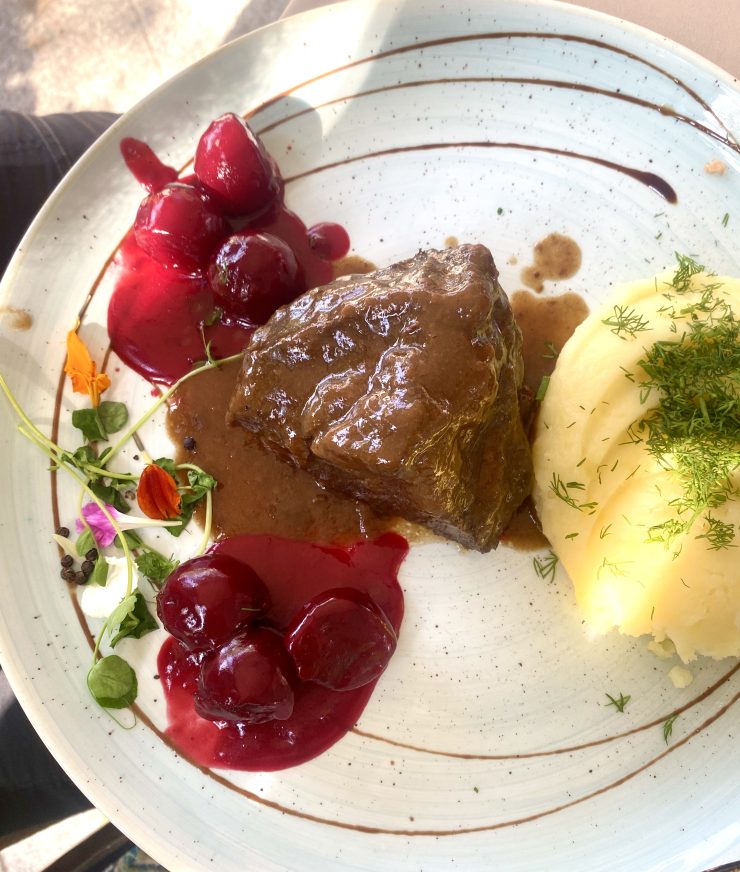
New Contemporary Polish Cuisine
As I reflect on my recent visit to Poland, I am filled with excitement and admiration for the vibrant and dynamic food scene that I had the pleasure of experiencing. Every culinary encounter was a delightful journey of flavors and discoveries, from the bustling markets to the cozy neighborhood eateries. The food in Krakow and Warsaw restaurants was top-notch. I also noticed that Polish cooking is becoming more contemporary and has undergone a renaissance in recent years, blending traditional flavors and techniques with modern twists and influences from around the world. Poland now has a few Michelin-star restaurants as well. That is why the title “The Tastes of Poland” seemed very suitable.
Chefs across Poland are embracing local, seasonal ingredients and innovative cooking methods to create dishes that are both creative and delicious.
Modern Polish cuisine has an emphasis on farm-to-table dining and sustainability. Chefs are sourcing ingredients directly from local farmers and producers, ensuring the freshest and highest quality ingredients with beautiful presentation and supporting the local economy. This focus on sustainability extends beyond sourcing ingredients to include reducing food waste and implementing eco-friendly practices in the kitchen.
Another trend in contemporary Polish cuisine is the fusion of traditional Polish flavors with international cuisines. Chefs are experimenting with new ingredients and techniques from around the world, creating familiar and innovative dishes. For example, traditional Polish dishes like pierogi or kielbasa may be given a modern twist by adding global ingredients like Thai basil or Japanese miso.
In addition to fusion cuisine, contemporary Polish chefs are also reimagining classic dishes in new and creative ways. Traditional recipes are being updated with modern cooking techniques and presentation styles, resulting in visually stunning dishes and bursting with flavor. Plates are carefully composed with an eye for color, texture, and balance, resulting in dishes that are as beautiful to look at as they are to eat. Garnishes such as edible flowers, microgreens, and colorful sauces are used to add visual interest and enhance the overall presentation of the dish. For example, classic pierogi fillings like potato and cheese may be transformed into a gourmet dish with truffle oil and crispy shallots.
One aspect of contemporary Polish cuisine that remains constant is the emphasis on hospitality and communal dining. Whether dining at a five-starred restaurant or a cozy neighborhood bistro, the warmth and generosity of Polish hospitality are evident in every meal. Sharing food with family and friends is an integral part of Polish culture, and contemporary chefs are continuing this tradition by creating dishes that are meant to be enjoyed together.
Overall, contemporary Polish cuisine is a vibrant and dynamic reflection of Poland’s rich culinary heritage and modern culinary innovation. From farm-to-table dining to creative fusion dishes, Polish chefs are pushing the boundaries of traditional cuisine and delighting diners with their inventive creations. Whether you’re a seasoned foodie or a curious traveler, contemporary Polish cuisine offers a delicious and exciting culinary experience that is not to be missed.
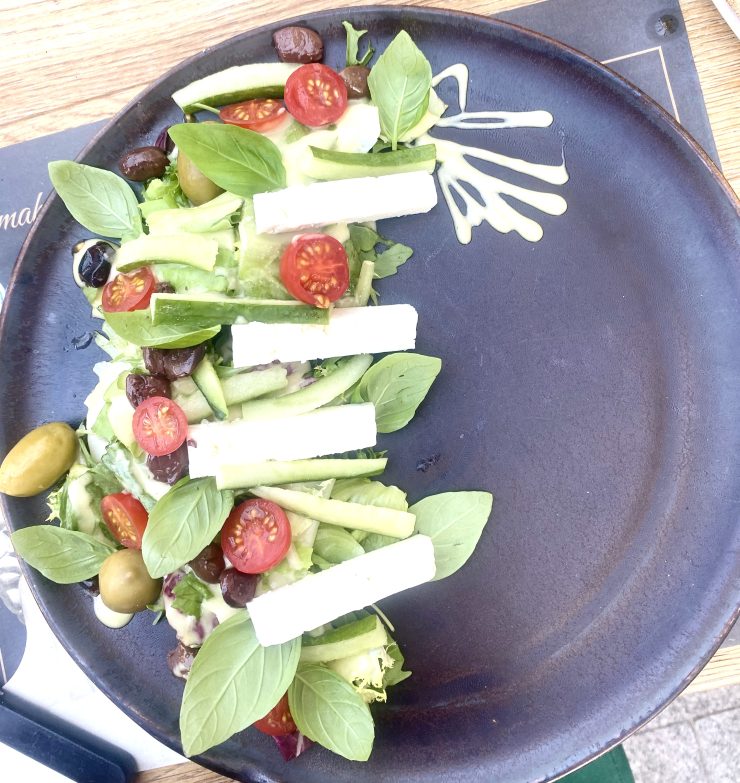
It is a nice and welcomed change from what I remember how the restaurant scene looked during communist times, which was heavily influenced by the state-controlled economy and government policies. The culinary landscape was characterized by a limited selection of restaurants, often run by the state or cooperatives, offering simple and standardized menus focused on providing basic sustenance rather than culinary innovation or creativity.
Under communism, there was a lack of diversity in dining options, with most restaurants serving traditional Polish dishes such as pierogi, bigos, and kielbasa. International cuisine was scarce, and ingredients were often in short supply due to rationing and economic constraints. Additionally, the quality of food and service in many restaurants was inconsistent, as resources were limited and there was little incentive for improvement or innovation.
With the fall of communism in 1989 and Poland’s subsequent accession to the European Union in 2004, the restaurant scene underwent a dramatic transformation. The opening up of Poland to the global market brought with it an influx of foreign investment, increased tourism, and exposure to international culinary trends and influences. As a result, the dining landscape became more diverse, dynamic, and sophisticated, with a growing number of restaurants offering a wide range of cuisines and dining experiences.
The European Union also played a significant role in supporting the development of Poland’s culinary industry by providing funding, training programs, and opportunities for collaboration with other European countries. This helped foster innovation, creativity, and entrepreneurship in the restaurant sector, leading to a new generation of chefs and restaurateurs eager to experiment with new ingredients, techniques, and flavors.

What Are The Most Popular Contemporary Dishes In Poland Now
These dishes often blend traditional Polish flavors with modern techniques and international influences, resulting in a diverse and exciting culinary landscape. Some of the most popular contemporary dishes in Poland include:
- Modern Pierogi Variations: Pierogi remains a beloved staple of Polish cuisine, but contemporary chefs have taken them to new heights by experimenting with innovative fillings and presentations. Examples include pierogi filled with unconventional ingredients like duck confit and cranberry or pierogi served with modern sauces and garnishes.
- Beef Tartare: Beef tartare has become increasingly popular in Poland, with many restaurants offering unique variations of this classic dish. Contemporary twists on beef tartare may include unconventional seasonings, garnishes, and accompaniments, such as truffle oil, pickled vegetables, or crispy shallots.
- Smoked Salmon with Quinoa Salad: This dish combines traditional Polish flavors with modern ingredients and techniques. Smoked salmon is paired with a refreshing quinoa salad made with fresh herbs, vegetables, and a tangy vinaigrette, creating a light and healthy dish that is perfect for summer dining.
- Duck Breast with Fruit Compote: Duck breast is a popular protein choice in contemporary Polish cuisine, often served with a flavorful fruit compote made from seasonal fruits such as apples, cherries, or plums. The sweetness of the compote balances the rich, savory flavor of the duck, creating a harmonious and satisfying dish.
- Beetroot Carpaccio: Beetroot carpaccio is a vibrant and visually stunning dish that showcases the versatility of this humble root vegetable. Thinly sliced beets are layered with goat cheese, walnuts, and arugula, then drizzled with a balsamic reduction and olive oil, resulting in a refreshing and elegant appetizer or salad.
- Lamb Shank with Root Vegetable Puree: Slow-cooked lamb shank is a favorite among Polish diners, especially when paired with a creamy root vegetable puree made from carrots, parsnips, and celery root. The tender, flavorful lamb is complemented by the rich and earthy flavors of the puree, creating a hearty and comforting dish.
- Apple Crumble with Vanilla Ice Cream: For dessert, apple crumble is a popular choice in contemporary Polish cuisine. Sweet, tart apples are baked with a crispy oat topping, then served warm with a scoop of creamy vanilla ice cream, creating a delicious and comforting end to any meal.
Polish cuisine is a treasure trove of delicious flavors and traditions, from comforting classics to indulgent desserts and everything in between. Whether you’re savoring a bowl of pierogi with family or exploring the bustling markets of Warsaw, there’s no shortage of culinary delights to discover in Poland. So, come along and join me on a culinary journey through the Taste of Poland Flavor of Poland Culinary Traditions. Try the fantastic food, take a cooking class, or take a food tour to experience the culinary riches of Polish cooking. Smacznego!
Watch the culinary-travel television series Flavor of Poland on PBS to learn more about Polish cuisine. You can just sign up; it is free to watch.
Polish Recipes
Yum
